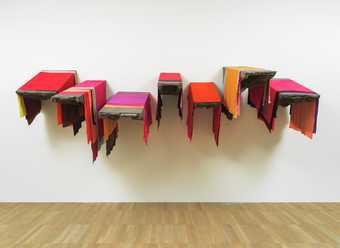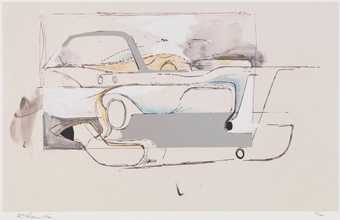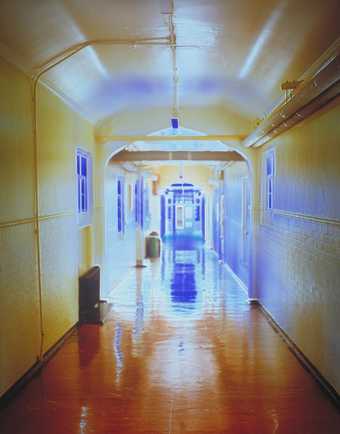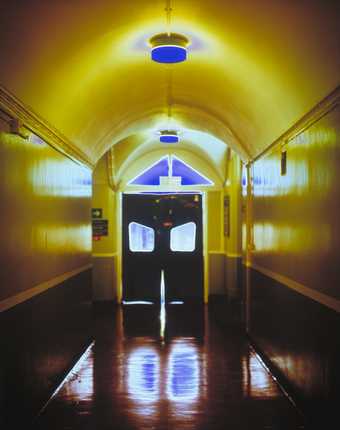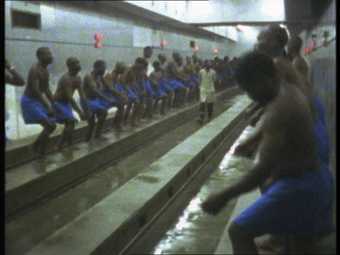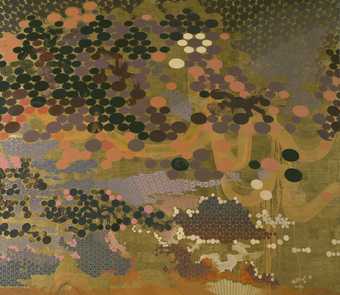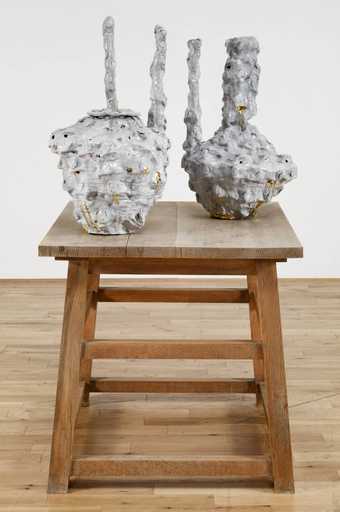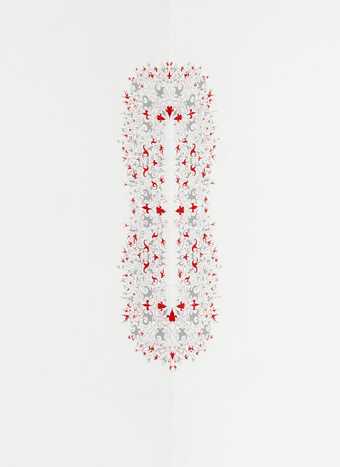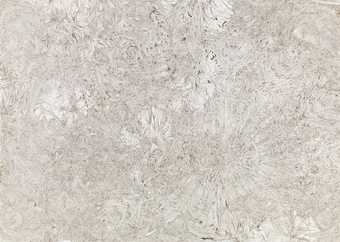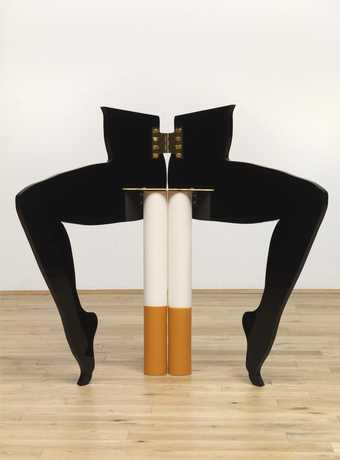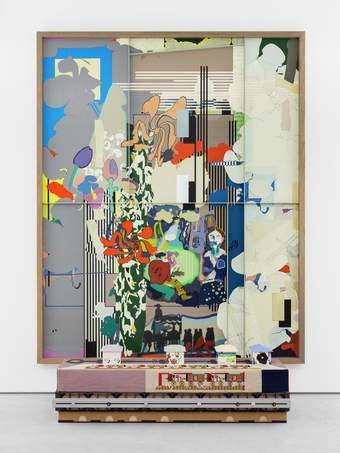
Not on display
- Artist
- Yinka Shonibare CBE born 1962
- Medium
- 6,328 books, dutch wax print fabric, gold foil, software, networked, world wide web, table and chairs
- Dimensions
- Overall display dimensions variable
- Collection
- Tate
- Acquisition
- Purchased with Art Fund support and funds provided by the Tate International Council, the Africa Acquisitions Committee, Wendy Fisher and THE EKARD COLLECTION 2019
- Reference
- T15250
Summary
The British Library 2014 is an installation of 6,328 hardback books individually covered in colourful ‘Dutch wax print’ fabric and arranged on rows of shelving. Names are printed in gold leaf on the spines of 2,700 of the books, the majority of which are of first- or second-generation immigrants to Britain, both celebrated and lesser-known, who have made significant contributions to British culture and history. Among names such as Hans Holbein, Zadie Smith, Dame Helen Mirren and Danny Welbeck, the names of those who have opposed immigration also appear, including Nigel Farage and Oswald Mosley. Adjacent to the bookshelves is a study space with tablets, where viewers are able to access the artwork’s website (http://thebritishlibraryinstallation.com), learn more about the people named on the books, and review materials selected by the artist that represent different perspectives on immigration. Visitors are also invited to submit their own stories using the tablets, and a selection of these responses is made available on the website. The books can be installed in purpose-built bookshelves to any configuration, or in existing bookshelves.
While The British Library is a celebration of the ongoing contributions made by immigrants to Britain, it also acknowledges dissent, by including those who have railed against immigration. The work is intended to provoke discussion, debate and reflection on all aspects of British culture, and considers notions of territory and place, cultural identity, displacement and refuge. The space within the installation facilitates this aspect of the work, providing an area for debate. The artist outlined the discursive and participatory nature of the project: ‘The British Library is an exploration of the diversity of British identity through a conceptually poetic lens. I look forward to the public engagement with the work.’ (Mark Brown, ‘Yinka Shonibare's tribute to UK diversity acquired by Tate’, Guardian, 8 April 2019, https://www.theguardian.com/artanddesign/2019/apr/08/yinka-shonibare-tribute-uk-diversity-acquired-tate-british-library-books, accessed 11 April 2019.)
The artist also made clear the work’s relevance to contemporary debates, including those concerning ‘the impact of the refugee crisis and conversations about freedom of movement in the European Union’ (Yinka Shonibare CBE, The British Library, http://thebritishlibraryinstallation.com/, accessed 11 April 2019). The sheer number of names, each with their own unique personal and family history, underlines the multiplicity of reasons behind immigration, stressing the impact of global conflicts and economic factors on an individual level. The library format of the work also addresses how knowledge is generated, stored and disseminated, questions with particular relevance in a digital age.
Shonibare has become known for his work incorporating ‘Dutch wax print’ fabrics across a range of different media (see, for example, the sculpture The Swing [after Fragonard] 2001, Tate T07952). The fabric is sold widely across Africa and in markets elsewhere which cater to the African diaspora, but was originally produced in the Netherlands in the nineteenth century. Based on traditional wax-resist fabrics made in Indonesia, nineteenth-century Dutch merchants originally saw an opportunity to mechanise its production for export to the Dutch East Indies. By the 1930s there was a booming trade in West and Central Africa for the ‘wax hollandais’, with designs being adapted to local tastes. Within a short period the imported product became a part of African cultural heritage, with unique designs being commissioned for family celebrations and more public commemorations. By incorporating this fabric into his work, Shonibare highlights the contradictions of colonisation and histories of cultural hybridity, while bringing to the fore questions of cultural appropriation, identity and nationalism.
The British Library was originally co-commissioned in 2014 by HOUSE 2014 and Brighton Festival for the Old Reference Library at the Brighton Museum and Art Gallery. The installation has since been presented at Museu Afro Brasil, São Paulo and Turner Contemporary, Margate in 2016, and was shown as part of the Diaspora Pavilion at the Venice Biennale in 2017.
Further reading
Yinka Shonibare MBE, exhibition catalogue, The Museum of Contemporary Art, Australia 2008.
Rachel Kent, Yinka Shonibare MBE, London 2013.
Yinka Shonibare CBE, The British Library, http://thebritishlibraryinstallation.com/, accessed 11 April 2019.
Aïcha Mehrez
June 2017
Does this text contain inaccurate information or language that you feel we should improve or change? We would like to hear from you.
You might like
-
Dame Phyllida Barlow DBE RA untitled: awnings, 2012
2012 -
Richard Hamilton Hers is a lush situation (1957)
1982 -
Catherine Yass Corridors
1994 -
Catherine Yass Corridors
1994 -
Oliver Payne, Nick Relph The Essential Selection
2002 -
Tracey Emin Is Anal Sex Legal
1998 -
Jeremy Deller, Alan Kane Souped Up Tea Urn & Teapot (Dartford 2004)
2004 -
Sir Steve McQueen Caribs’ Leap/Western Deep
2002 -
Toby Ziegler The Hedonistic Imperative (2nd version)
2006 -
Richard Wilson Butterfly
2003 -
Andrew Lord biting
1996–8 -
Richard Wright No Title
2002 -
Richard Wright No title
2014 -
Anthea Hamilton Leg Chair (Cigarettes)
2014 -
Helen Marten The Age in Which We Love (Bulging the House)
2021

